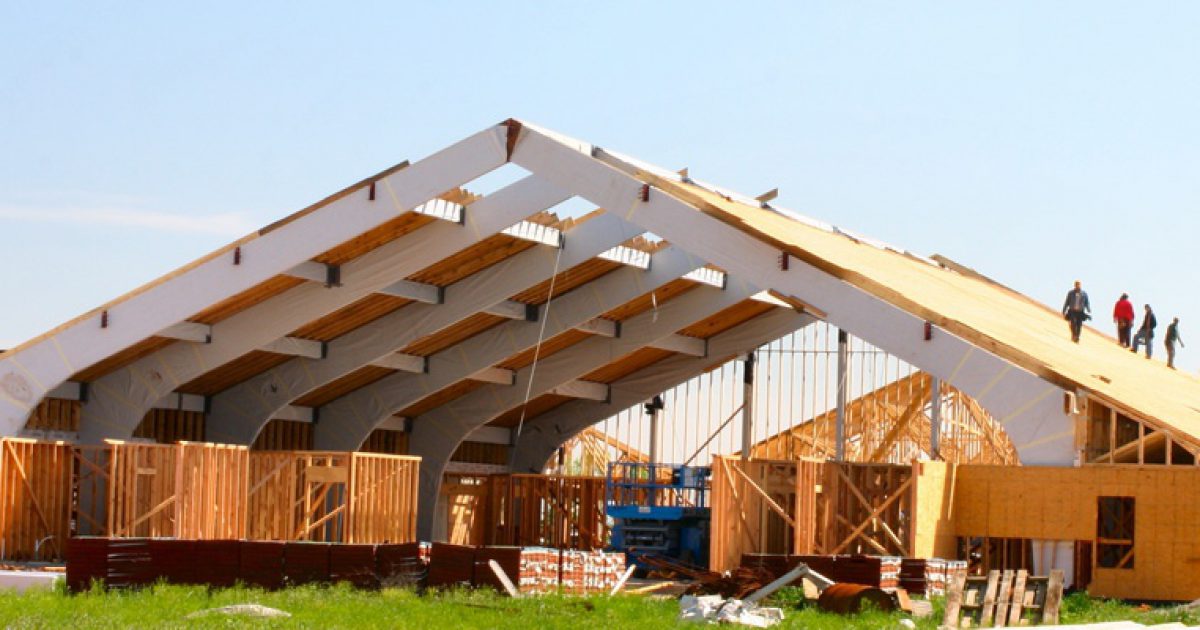Is Design-Build the best option for your Church?
Many church leaders recommend Design-Build for new and renovated church facilities. Sometimes, these influencers sound like churches should not consider any other option. Is this true?

In this post, I want to discuss:
- What options are there?
- What are the positives and negatives of each option?
- When should I choose each option?
- Is Design-Build the best option for your church?
What options are there?
What are the various options for the design and construction of buildings?
There are several contract relationships for the design and construction of new facilities, but they can be broken down into 4 major categories:
For more information and to understand nuances within these relationships, you can review the American Institute of Architects (AIA) standard contract agreements, which are considered the industry standard and are recommended for all project delivery options.
Design-Bid-Build
Design-Bid-Build is the traditional form of designing and constructing buildings.
Design-Bid-Build is the traditional form of designing and constructing buildings (AIA A100 series). In simple terms, the Owner hires a Design Team (generally led by the Architect). The Architect works with the Owner to design a facility and develop Construction Documents. The Construction Documents are bid among multiple General Contractors and their subcontractors. When the bids are received, the Owner selects one General Contractor to construct the facility. Throughout the process, the Architect can assist the Owner in making decisions.
Pros
- The Owner and the Architect retain all control of the design to ensure the Owner’s vision is accomplished
- Historically perceived as the most price-competitive option.
- Relationships between Owner-Architect and Owner-Contractor are kept separate, maintaining communication and accountability to the Owner.
- The Design Team will likely develop comprehensive Construction Documents to ensure quality construction and implementation of the Design Intent.
- Some financing companies require competitive bidding to ensure cost-effectiveness of the facility they are financing. The familiarity of this process leads some lenders to prefer this method.
Cons
- Constructability and Construction Cost input is limited during the design process, which may lead to projects over budget and/or more expensive due to inefficiencies of the design.
- Tendency to go with the low bidder can result in poor Contractor performance.
- The time and effort to develop open bid Construction Documents can increase the cost of the Design Fees.
- When something goes wrong, the separation between the Architect and the Contractor in relation to the Owner can create some complexity and/or animosity. For inexperienced Owners, this can become a frustrating situation.
As the traditional approach to design and construction, Design-Bid-Build is the delivery method Church Leaders react against when they recommend Design-Build.
Conclusion on Design-Bid-Build
As the traditional approach to design and construction, Design-Bid-Build is the delivery method Church Leaders react against when they recommend Design-Build. As a result, use this method carefully. Upon request, I can recommend safeguards to help Design-Bid-Build be successful if you feel it is the right solution for your project.
Construction Manager as Advisor
Construction Manager as Advisor is a relationship where the Owner hires a third-party Construction Manager to serve as their representative and decision maker throughout the process (AIA A132). The primary goal of this approach is for an inexperienced Owner to have an experienced voice on the team.
Adding an independent Construction Manager to the team adds cost with limited improvement in the process.
The Construction Manager’s role is to mitigate the “cons” of the Design-Bid-Build approach. Generally, all of the pros and cons of Design-Bid-Build still exist, but you have added a savvy third-party player to navigate through the difficulties. The Construction Manager needs to fully embrace and understand the vision and desires of the Owner for this relationship to be successful.
Adding an independent Construction Manager to the team adds cost with limited improvement in the process. Unless the Project is a very large project, I do not recommend this approach for churches. Most of the positives to Construction Manager as Advisor are also provided in either the Construction Manager as Contractor or the Design-Build relationships.
Construction Manager as Contractor
Construction Manager as Contractor is the happy medium between Design-Bid-Build and Design-Build.
Construction Manager as Contractor is an approach where the Contractor is brought into the process early as an Advisor until the project is ready to bid and construct. At which time, the Construction Manager bids to subcontractors and serves as the General Contractor throughout the rest of the process (AIA A130 series). Sometimes, the Construction Manager is chosen first and helps with the Design Team selection. Other times, the Design Team (Architect) is on-board and helps with the Construction Manager selection process. Either way, this approach is the happy medium between Design-Bid-Build and Design-Build.
Pros
- The Contractor is on-board early and provides pricing and constructability input throughout the process.
- Retains the price-competitive advantage of bidding with subcontractors. An Owner can also negotiate a competitive CM Fee during the Construction Manager selection process.
- Relationships between Owner-Architect and Owner-Contractor are kept separate, maintaining communication and accountability to the Owner.
- Generally includes open-book accounting between Construction Manager and subcontractors, allowing Owner to see exactly where their money is going.
- Open-book relationship can also allow Owner greater influence on subcontractor selection.
- Increasingly seen as financially competitive in the Lender environment.
- The Design Team will develop the level of Construction Documents based on the perceived trust and understanding of the Construction Manager, potentially saving costs on design fees.
Cons
- While not as common as with Design-Bid-Build, when something goes wrong, the separation between the Architect and Contractor in relation to the Owner can create some complexity and/or animosity.
- If left unchecked, the Construction Manager can overly influence the design process, which may put the vision and design intent at risk.
- Design fees can sometimes be higher than with Design-Build, but generally lower than Design-Bid-Build.
As an Architect, I see many large institutions moving from Design-Bid-Build to Construction Manager as Contractor. This reality speaks volumes.
Rev. Andrew P. Kulp, AIA, NCARB, CCC
Conclusion on Construction Manager as Contractor
As an Architect, I see many large institutions moving from Design-Bid-Build to Construction Manager as Contractor. This reality speaks volumes. Keeping the Architect and Contractor relationships separate with the Owner is something I have enjoyed on multiple medium-to-large projects. The larger and more complex the project, the more the Owner-Architect relationship matters. The more experienced in construction the Owner Representative is, the more the Owner-Architect relationship matters.
Generally, unless a project is small and the Owner has limited construction knowledge on their team, I recommend the Construction Manager as Contractor approach for Church facilities.
Design-Build
The simplicity of a single team-based relationship is why many church leaders recommend Design-Build.
The Design-Build approach is where the Owner has a single contractual relationship with a Contractor & Design Team (AIA A140 series). Most of the time, the contract is with the Contractor, and the Architect is either employed directly by the Contractor or hired as a consultant/subcontractor. Occasionally the relationship is the other way around, but that is not the norm.
Pros
- Single point of contact between the Owner and the entire project.
- High level of collaboration between the Contractor and the Architect.
- The Design Team will develop Contract Documents based on information required for the Contractor to build, and built on confidence in their relationship. This process generally results in lower design fees.
- When issues arise between the Architect and the Contractor, their relationship encourages them to work it out with minimal Owner responsibility.
- High level of cost-control throughout the Project process.
- With bidding among subcontractors, can be perceived as financially competitive in the Lender environment.
- Can be set up as an open-book process, providing the same advantages as Construction Manager as Contractor.
Cons
- The Contractor often has higher level of influence on design that may interfere with the Owner’s vision or design intent.
- The Relationship between the Contractor and the Architect may prevent Owner from knowing pertinent details about the project.
- Some Lenders may not see this method as financially competitive.
- When the Design Team is a subcontractor to the Contractor, markups might be added, offsetting the potential savings in simplified Contract Documents.
Conclusion on Design-Build
The simplicity of a single team-based relationship is why many church leaders recommend this approach. For an inexperienced church leadership team, there are a lot of positives in the Design-Build relationship. For small projects, the simplicity also makes a lot of sense. As projects grow, complexities of design increase, or the Owner’s experience is greater, the simplicity of Design-Build loses value and Construction Manager as Contractor begins to be more attractive.
Is Design-Build the best option for your church?
Honestly, I can’t answer this question without a more in-depth conversation with you about your particular situation. Feel free to Contact Me and we can discuss further. From the above information, I will likely steer you toward Construction Manager as Contractor for most projects, and Design-Build for simple or smaller projects.
If you are considering a construction project at your church or ministry, our team at Chapman Sisson Architects would be glad to open up a conversation. We have vast experience in all the forms of Project Delivery and look forward to helping you make the right decision.

